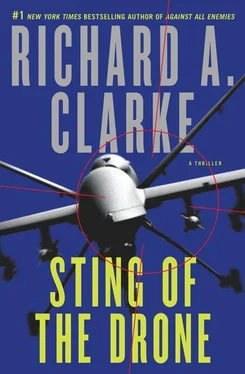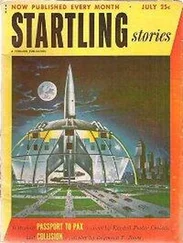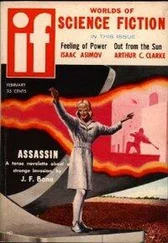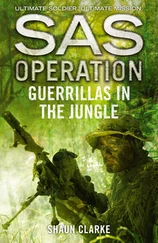“Well, thank goodness for that, Seth, or you would be coming after me I suspect,” Under Secretary Liz Watson intervened. “I’m half joking, Seth, but this is a serious problem. You are asking us to approve killing a guy in a friendly European country and you won’t tell the Austrians, or even this committee, who the source is so that we can judge for ourselves whether to believe that there is a risk that justifies this action. You have only one source? No corroboration? What is this source’s motivation? What is this source’s past record of reporting? How long has he been reporting?”
Again, the room fell silent.
“I’ve said all I can say. We have good reason to believe the source,” the CIA man finally replied, looking down at the tabletop.
Normally backbenchers were quiet, but the man sitting behind Winston Burrell spoke up. Raymond Bowman was the Director of the Policy Evaluation Group, a small, unconventional unit that theoretically reported to the Director of National Intelligence, but really worked directly for Burrell. PEG was his “second opinion” team, his independent, low-profile unit that trolled through the other agencies’ intelligence, but also mastered open sources. They talked to subject matter experts no one else had found, and had a track record for prediction that consistently beat the rest of the gigantic Intelligence Community. Although they all knew him, it was Bowman’s first time attending the Kill Committee, as some of the participants had taken to calling the meeting.
“Putting aside the sourcing for the minute,” Ray began, “how exactly are we planning to fly a drone into Austrian airspace and then cause an explosion somewhere in their country without them figuring out that we violated their sovereignty?”
Burrell intervened before Bowman’s question could be answered. “You all know Ray. I have asked him to serve as my, sort of, informal deputy on all things drones. So, in the future, when you hear from him on these issues, he is me. Good question, Ray. Goes to the operational risk assessment. Seth?”
The two Intelligence Community men looked at each other, both clearly upset that they would now have another intelligence professional second-guessing them. Bowman’s PEG already did that to their analysis on a regular basis. Now that group of odd balls was going to start questioning their operational judgment? It seemed that neither Intelligence representative wanted to be the one to get into the operational risk details. Todd Hill from the National Counter Terrorism Center, however, grudgingly explained, “We will be using new, covert drones. They will be launched from a rural area inside Austria at night. The attack ordnance will self-incinerate, leaving no forensic signature. We will provide the Austrians with information that leads them to conclude that a rival drug gang did the attack using a hidden parcel type bomb.”
“Oh, shit. This just gets better and better,” Liz Watson said. “I can tell you, Winston, that the Secretary of State will not support this. You are going to secretly smuggle drones into Austria. You are going to convert some Austrian farm into a secret U.S. drone base. You are going to lie to the Austrians about what happened. And you are going to blame some other group for the attack, probably leading to them being killed in retaliation for something they did not do. Beautiful, just beautiful.”
“I’m afraid the Attorney General will join in that dissent,” Ron Darden added.
The Admiral and the Under Secretary of Defense sat silently.
“Well, I will have to discuss this with my boss,” Burrell said. There was no indication what he would recommend to that boss. “There are eleven more IC noms, Mackerel, Salmon, a whole sushi bar here. Has everyone had time to go over the rest? Any comments or questions on those?”
“I do,” Ron Darden from Justice answered.
Burrell slumped back in his chair. He had clearly been hoping that this session was nearly over. He could not help but think of himself and the others as Roman senators in purple-trimmed togas, sitting in the Coliseum and holding out their arms with their thumbs up or down, signaling which of the Christians and slaves would be killed. Only none of these victims were Christians.
“Pike and Pickerel,” Darden began, “they are both Mexican drug kingpins. How is it that they are being put on the Kill List? I thought that the Finding only authorized us to go after al Qaeda and its affiliates. Since when is the Rico Martinez cartel an AQ affiliate? And again, why can’t the Mexican authorities get them? Or do you have an ultrasecret source you can’t tell us or the Mexicans about there, too?”
“Good questions,” Burrell commented. “CIA, Dr. Kaplan?”
Todd Hill replied instead. “I’ve got the brief on this one. Hezbollah has approached both the Martinez and the Montevilla drug gangs. The leaders of both groups, Mister Pike and Mister Pickerel, have agreed to smuggle terrorists into the United States in return for a lot of money from Hezbollah, meaning ultimately Iran. Hezbollah is also on the list of terrorist groups we can peremptorily attack.”
Liz Watson returned to the fray, on behalf of the State Department. “So, since you can kill Hezbollah guys if they are planning to kill Americans, therefore Hezbollah guys being smuggled into the U.S. are automatically assumed to be planning to conduct terrorist attacks in the U.S. and Mexicans who have agreed to help them with the human trafficking are therefore assumed to be affiliated Hezbollah terrorists and subject to death by drone. And the reason you can’t tell the Mexicans is again some sensitive source bullshit?”
“No, Ms. Watson,” Todd Hill began slowly, “we actually have told the Mexicans. They asked us to use UAVs against these two gentlemen because the Mexican authorities said that they are too well guarded for the Mexicans to arrest or attack, even if they used the Mexican Marines.”
“Have we used drones in Mexico before?” Ron Darden asked.
“Homeland does, but they are unarmed,” the Admiral chimed in.
“Now may not be the time to open up another theater of operations for lethal drone attacks, particularly so close to U.S. territory,” Winston Burrell noted, sitting up straight and folding his fingers together on the table, forming a little tent above his papers. “Seth, Todd, maybe you could come back to us with an alternative to the Hezbollah Mexican human trafficking caper?”
The two Intelligence Community men nodded.
“Anything else for the good of the order?” Burrell asked. “Good, then we are adjourned.”
As he left the Situation Room and walked down the hall to the take-out window of the White House Mess, Burrell wondered how it had happened. He had just signed the death certificates for sixteen more men, plus however many others who would have the misfortune of standing nearby them. On average that number was four. So, he had just ordered sixty-four executions and, he thought, he wasn’t even the Governor of Texas.
He ordered a large coffee, black, from the young sailor at the take-out window. It would take a while, he knew, maybe a few months, but based on past practice, the targets would all be found at a place and time when they could be killed without unacceptable collateral damage. Some would probably die tomorrow. How had he ended up doing this? When they had started using the drones to kill, right after 9/11, it had seemed like a welcome way of finally stopping terrorist attacks on Americans. Somehow, it had grown into an industry, and he was the CEO of the industry leader.
Burrell looked up and saw Raymond Bowman exiting the Situation Room with Admiral Johnston. He signaled Ray to join him upstairs.
* * *
“Well, you too are now indictable by the War Crimes court,” Burrell started when Ray walked into the National Security Advisor’s office carrying his own large coffee. Burrell dropped into a large, wing-backed chair. Ray sat in another one opposite him.
Читать дальше












